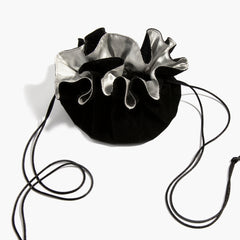_____
Early on, earrings signified status. Since at least 3000 BC, people from Mesopotamia to Asia wore earrings that identified their religion, political affiliation, or tribe. Ancient wall carvings show that soldiers in the Persian army wore a single drop-style earring.
In Egypt, the wealthy flaunted their status by piling on heavy hoops of gold or silver, gems, and turquoise (King Tut was buried with his earrings), while lower-class citizens wore humble pieces made from beads and copper.
Later, in pre-Hispanic Mexico, Aztec people commonly wore earplugs – similar to today’s ear-gauge styles – that signified their status as a king, warrior, priest, or other social standing.
The goddess Chalchiuhtlicue wore jade, a symbol of water, in her ears to denote her divine domain over lakes, rivers, and streams. They were considered a form of spiritual protection.
Earrings have long been considered magical – and were crafted into totemic symbols that either brought good luck or repelled evil spirits. One of the oldest of these protective amulets is the Egyptian ankh, also known as the Key of Life.
The sign of a cross with a loop on top is believed to be a conduit for a spiritual force that grants the wearer vitality, health, and long life. In the Middle East and North Africa, Jews and Muslims feared the “evil eye,” a malicious stare believed to cause illness, death or general bad luck.
The Hand of Fatima (or Hamsa) – the iconic upside-down hand cradling an eye in its palm – became an ever-present symbol in all types of jewelry in this region of the world, revered as a guard against evil. With the rise of Buddhism in Asia, the lotus flower blossomed into an important jewelry motif that came to represent faithfulness and good fortune. The flower’s beautiful petals grow from muddy waters, making it also a vibrant symbol of rebirth and reincarnation.
Consider earrings your modern talisman. This fall, you can unlock extra dimension in your personal style by incorporating these and other primal symbols into your own wardrobe.
Shop our complete earrings collection today.
Written by Joanna Powell



